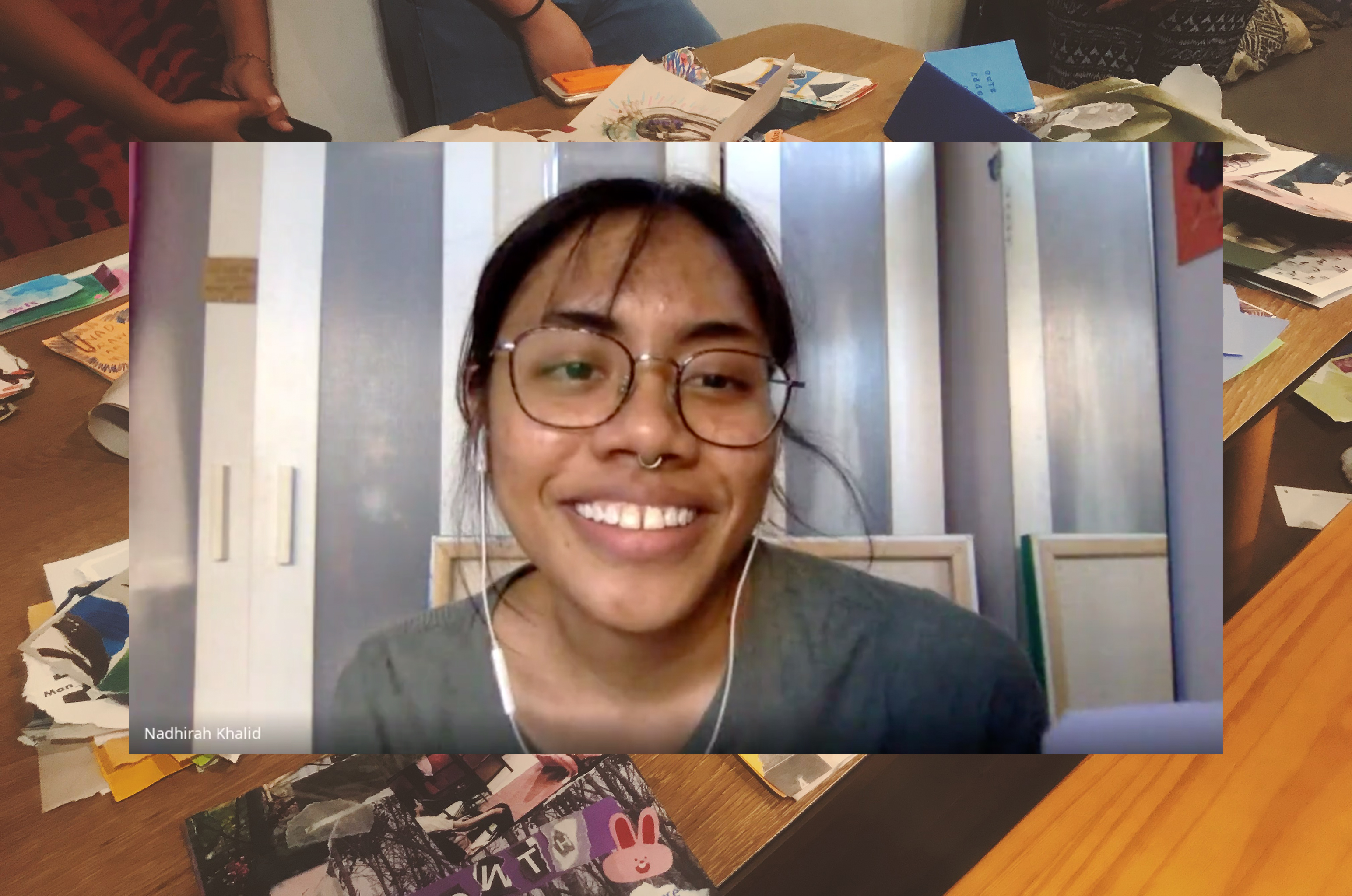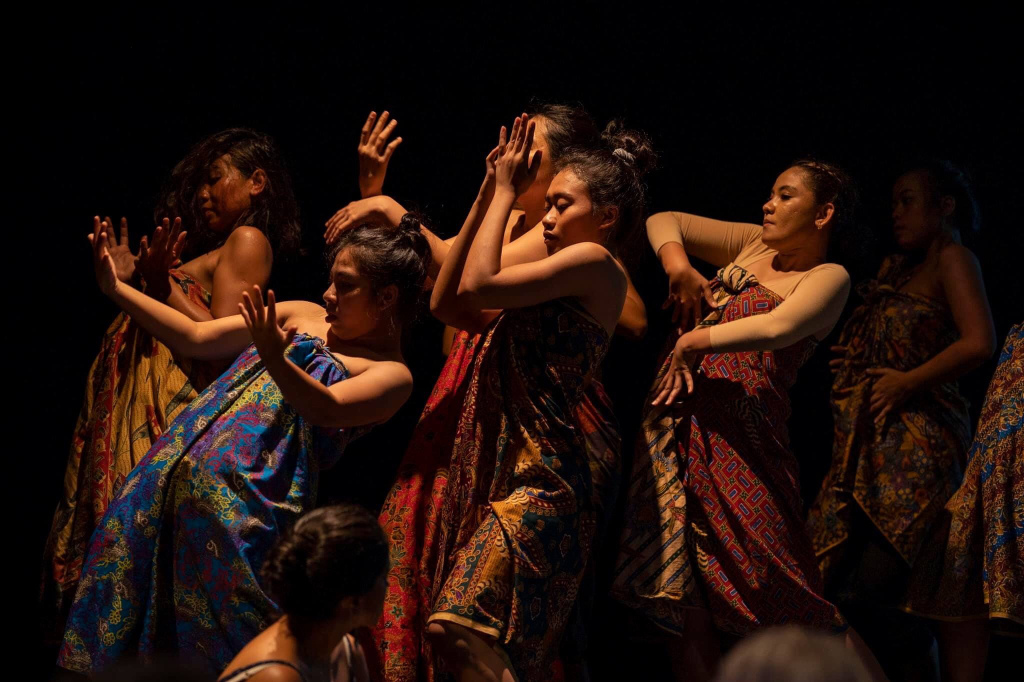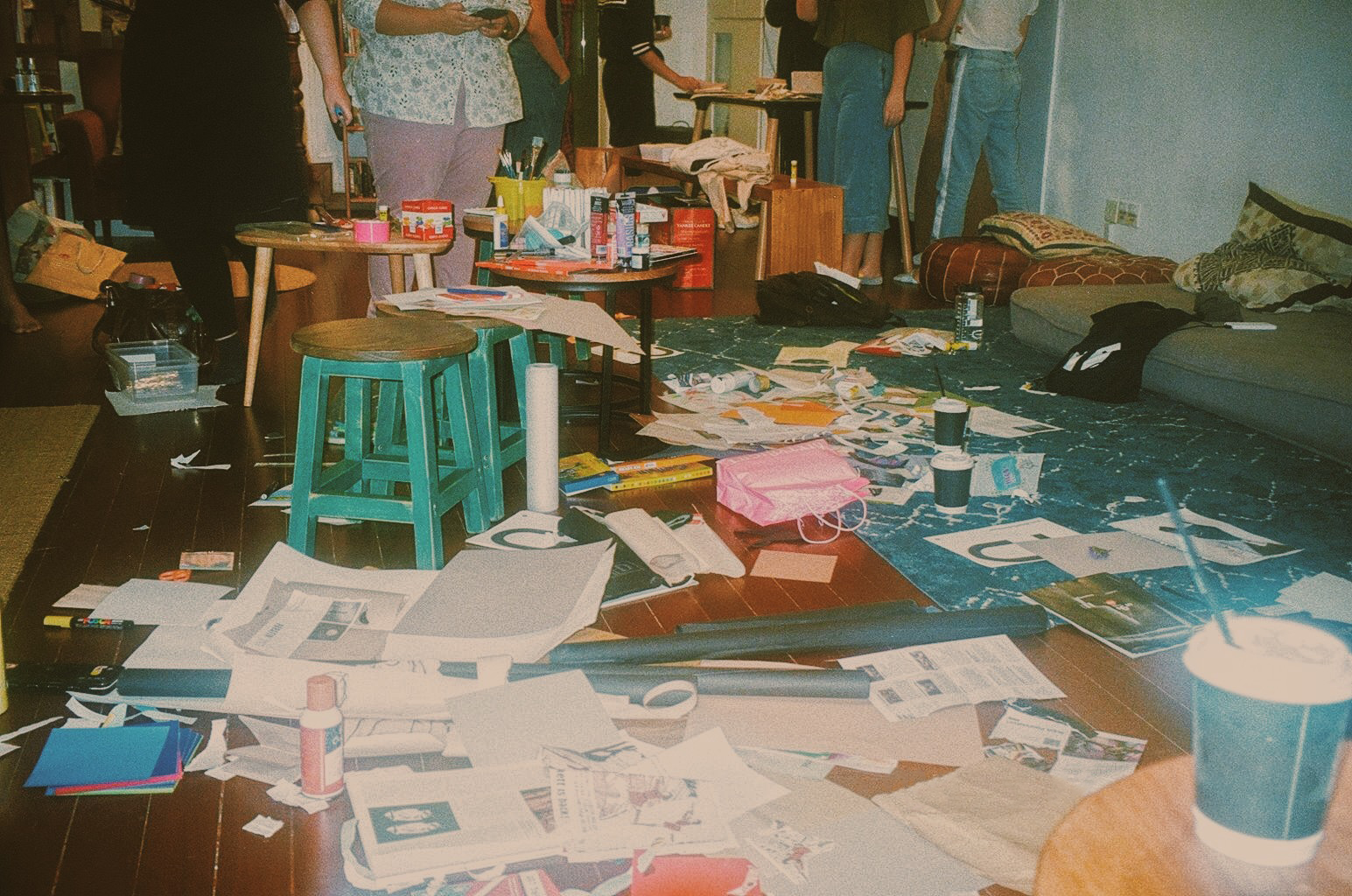Nadhirah Khalid is a Fine Arts undergrad in LASALLE College of the Arts. She is deeply interested in gender issues pertaining to body and identity politics and works with film as a medium to inscribe more inclusive and diverse narratives.
The words “art” and “fun” are not commonly placed alongside one another in the sentence. Art is not meant to be a hobby, but a practice that should be seriously considered and pursued. Enter Radioriotgrrrl, a project initiated by Nadhirah Khalid and her collaborator, Mengju Lin. Radioriotgrrrl creates a safe space for people to come together, watch movies, make zines, and most importantly, have fun. It is energetic and ground-breaking, something that its creators were well aware of when formulating its manifesto. We speak to one half of the collective to find out what it takes to rebel against the stiffness of the art world and to make the sort of art that you’d enjoy making.
The words “art” and “fun” are not commonly placed alongside one another in the sentence. Art is not meant to be a hobby, but a practice that should be seriously considered and pursued. Enter Radioriotgrrrl, a project initiated by Nadhirah Khalid and her collaborator, Mengju Lin. Radioriotgrrrl creates a safe space for people to come together, watch movies, make zines, and most importantly, have fun. It is energetic and ground-breaking, something that its creators were well aware of when formulating its manifesto. We speak to one half of the collective to find out what it takes to rebel against the stiffness of the art world and to make the sort of art that you’d enjoy making.

Exorcize Me, Sookoon Ang
2013
2013
When we look at artworks, there are often so many ways we can try beginning to distill our encounter with them. Looking through your selection, something that really struck me was how they are strung together by languages of spirituality, the body and how we harness or translate these energies. I’m curious to hear from your perspective, how would you describe the connections between these works and what are the languages you lean into to approximate your experience with artworks? This could be through the language of space, time, spiritual, historical, intimacy or any other that comes to mind.
The most immediate connection I make between the works I’ve selected for our conversation is the striking presentation, or rather re-presentation, of the female body. This is not to say that all of these works are explicitly political about the fact that they touch on issues of body image or identity. However, I think that all of these works present something a perspective is subversive to the established art canon, and this is clearly seen in how they present the female body. To me, these works are connected in how they disrespect, in their own ways, gender stereotypes. They are disobedient, defying the canon of art. These works were all made at different points of time, but you see overlapping themes between them that pertain to identity and body politics.
Gender inequality still persist to this day. The prevalence of these issues really resonates with me, and that’s why I relate with all of these works. The languages these works speak in are mostly that of time, histories, body, and space. How I see myself relating this to my practice is in how I harness my personal narrative. In talking about these issues and in relating this back to my community, perhaps it can, in a way, help to normalise an experience.
 Nak Dara, Hasyimah Harith
Nak Dara, Hasyimah Harith2020
Photography: Gracebaey & Roarworks
Tell us about what compels you towards Hasyimah Harith’s Nak Dara. It is incredibly multi-layered, complex, and is difficult to distil or categorise into a single thing or entity. You referenced the work in your dissertation as well, and I was wondering if you speak as to the encounter you had with it — even as someone who hasn’t seen the work in person yet.
I don't really follow P7:1SMA on social media, so I only found out about the work when it was shown as part of Singapore Art Week this year. I started seeing people posting and circulating information about this work, and it piqued my interest. I am familiar with the term nak dara, and it is something that my relatives have called me. When I began reading up about the work, it struck a very personal chord for me. For me, what really stuck was the way in which brown bodies were mobilised in a unified dance that expressed autonomy and female sexual desire. These are topics that are incredibly taboo within the context of a Malay and Muslim community. Yet, these are issues that I deal with and want to navigate as well. Many Singaporeans associate Malay women with conservative values and religious expectations because a lot of Muslim Malay women wear the hijab. There are notions of purity that are ascribed to and expected of these women. To then see these bodies presented in the way they are in Nak Dara, I would say, is very transgressive. It is for that reason that the work speaks to me on a very personal level. It encapsulates the sort of frustrations that I have in being seen as a nak dara, having my virginity commodified, and then demonised for any form of sexual expression.
I remember attending this open circle with P7:1SMA, and Hasyimah was there. She’s incredibly charming, and her energy is so refreshing. I hadn’t met her prior to attending that event. but I remember her greeting me like an old friend as I came into that space. There’s something very personal, I think, about her interactions with people — be it the audience or her collaborators. That really cemented how much I felt for and related to this work.
Corps étranger, Mona Hatoum
1994
This idea of speaking very honestly about the body is something that stands out in Mona Hatoum’s work as well. Hatoum is known for works that are incisive, political and profoundly personal — Corps étranger is no exception. Although the work takes a really close, microscopic look at the body, one can have an incredibly disembodied experience with it. When you think of the body, what comes to mind? Is it a site for action, a shell to be filled, a corpus, or something else entirely?
Honestly when I think of the body, the slogan “the personal is political” comes to mind. From there, I make that association with performance art. I would attribute this to the final year project that I'm currently working on. Right now, I’m in this headspace where I’m working closely with body issues. My work touches on female circumcision, for example. Coming back to the slogan I mentioned, I think our bodies have power. Yet, female bodies are incredibly regulated. I think it is important to ask questions about that. Why does the female body need to be policed and regulated?
Thinking of performance art and how bodies feature within performance art, it is clear that performance is a practice without partitions or barriers. Because of that, artists can mobilise their own bodies in order to reach out to audiences on a more physical and human level. In doing so, their personal experiences can be translated for and related to a mass audience. For me, I use my own body in my practice, and I think of the body as a medium. Using my body is, to me, the most natural thing to do. It allows me to make the kind of art that I want to see. It allows me to create works that addresses social issues.
Radioriotgrrrl is a project you’re now working on along with Mengju Lin. Early on, you were both very vocal as to the fact that the project had a manifesto — something that I haven’t seen many projects take on in such a pointed way in a while. Talk us through the manifesto, and why that was important for the both of you to put together.
We wanted to create a space where we could come together, share resources, share materials, share ideas, and most importantly, make art together — regardless of what your definition of art is.
Personally, I think this whole project defies the conventions of “high art”. Historically, art has been incredibly exclusive. It privileged those who were fluent in its forms and languages, and excluded anyone who was outside of these circles. I think art is for everyone, and this is what I try to emulate with this project. It was important for us to provide that space, time and activities for anyone to engage in art making — however that might look like for them. In our zine parties and our movie parties, we like to encourage those who join us to leave societal pressures at the door. We really encourage them to just respond to the materials we have, and make whatever they feel like or want to make. There is no pressure at all, and it’s really about just going with the flow.
Zine-Making for Self Care
2020, Event at The Moon
2020, Event at The Moon


There is definitely a clear element of fun in all the Radioriotgrrrl events and parties. I can’t remember when was the last time I thought of art as something that should be fun. It isn’t something we often talk about, but of course art should be fun. You spoke about your experiences with art school earlier, and I was wondering if you could tell us how important having fun is to your practice in relation to what you’ve been taught.
The importance of having fun whilst making art was completely overshadowed by how I felt this need to justify all of my artistic choices.
This might just be the by-product of being at university and having to conform to certain institutional standards. Yet out this frustration, we managed to create this little project to channel our energies into making more art.
Zines have been, for a long time, both a tool and a resource for subcultures and political resistance. There are so many facets to zine culture, which makes it an incredibly rich medium to situate the project within. Having worked collaboratively and across disciplines, is there a particular quality to working with zines that still surprises or amazes you?
When I’m working with zines, I'm always surprised by how I rely on my natural instincts in responding to the materials that are available at a particular session. This isn’t the case with other mediums, such as photography or videography, that I’m familiar with. With photography or videography, I tend to plan ahead. I have to think about the composition of an image, or the subject I’m working with. It can sometimes be an incredibly rigid process.
Zine-making, on the other hand, can be such a grounding experience. Personally, I find it very calming. Having the time and space to make things based off my immediate inclinations, instead of having to calculate everything, is really refreshing. I look forward to every zine-making session we have, because I don’t have to think about making something that’s good enough or that can be monetised. I can just make art that’s good enough for me.
Let’s talk about the film screening parties that Radioriotgrrrl hosts. They are such a great way of building community and cultivating solidarity, and I wondered if you could tell us about how they came about and what sparked off these parties in the first place.
Essentially, we wanted to share art in its many forms.
We’ve done this through zines, films and even music. These gatherings are opportunities to just network with people. You get to talk to other people about the sort of films you watch, the sort of music you listen to, or the sort of art you like. You can even exchange recommendations. It embodies this Malay phrase, gotong royong, which describes a strong community spirit. In these difficult times, this project is a real celebration of togetherness.
Radioriotgrrrl Movie Party: The Punk Singer
2020, Event at 9 Winstedt Road
Radioriotgrrrl Movie Party: A Girl Walks Home Alone At Night
2020, Event at 9 Winstedt Road
2020, Event at 9 Winstedt Road
Radioriotgrrrl Movie Party: A Girl Walks Home Alone At Night
2020, Event at 9 Winstedt Road
It would be remiss of us to not speak of the Riot Grrrl Project as it emerged in the US in the nineties. Mostly associated with the raw and DIY quality of punk style and aesthetics, the movement gained so much ground because of how embracing or accepting it was — anyone could be a part of it. Today their activism remains searingly relevant, but I think a lot of the ways in which we rally together to speak up about these concerns have changed. What does a riot grrrl look like today?
I don’t think there’s a singular way of defining or being a riot grrrl. When Mengju and I were thinking of what to name this project, we were very clear that its title shouldn’t exclude anyone. For example, we didn't want to spell out the word “girl”. We followed the original reference to “grrrl” instead so as to embrace people who might identify with the broader term.
Ultimately, I think a riot grrrl is someone who tries to do what they can to help whomever they can. A riot grrrl is someone who shares resources and works with others to incite real change. It comes back to the phrase I brought up earlier — gotong royong.
It’s about banding together and looking out for each other. That’s what I think a riot grrrl looks like today.
 Little Red Riding Hood, Miwa Yanagi
Little Red Riding Hood, Miwa Yanagi2004
Meshes of the Afternoon, directed by Maya Deren and Alexander Hammid
1943
In our email conversations, you spoke of striving towards the dream-like quality of Meshes of the Afternoon and the strange but almost utopian reality depicted in the Fairy Tale series. I’d like to speak a little bit as to what you aspire towards in your practice. What are the sort of dynamics or possibilities you’d like to open up or facilitate through your work, and where do you think you are with that at the moment?
I picked out Meshes of the Afternoon and the Fairy Tale series by Miwa Yanagi for our conversation because I’m incredibly drawn to the dreamlike aesthetic in both works. It is something that I admire a lot, and it is a look I aim for in my work. I think this aesthetic is able to evoke a sense of uncanniness.
In Meshes of the Afternoon, for example, there is something so unsettling and discomforting about the work. It opens up questions as to the psychology of fear or the affective quality of disgust. Why are we disgusted by certain bodies? Why are we afraid of elderly women? I want to work within these realms so as to unpack our society's anxieties with regard to certain bodies and to facilitate discussion around the politics of the body.
This really stems from my final year project, which currently examines cultural norms around notions of purity. When I first started my project, I looked at modern horror cinema. I looked at modern Hollywood films and Southeast Asian films, and I was intrigued by how female monsters or ghosts were portrayed. I think horror is, inherently, a feminine genre. When you think of the female antagonists in these films, figures such as Ginger Snaps or Pontianak, they have been disempowered by the patriarchy in different ways. In most cases, this is manifested through gendered violence. The Pontianak, for example, was either raped or sexually abused. Becoming a ghost then gives her the agency to fight back, so I think there’s something really interesting there.
I guess that’s why I’m drawn to the works of Miwa Yanagi and Maya Deren. Their ability to elicit the uncanny and this dreamlike state is something that I would like to reach for in exploring our societal fears.
There are many ways one can approach the same set of issues, but why turn to a dreamlike aesthetic to speak of these real and experienced realities? What was the thought process that led you towards meshing these two things together?
More than anything, it’s my personal inclination in that I prefer this aesthetic. Reaching for a dreamlike quality in order to discuss real life issues boils down to my own artistic choices. I’m not entirely sure why that’s the case, and that might be something I want to explore as well. Doing so does create a certain juxtaposition, but maybe that’s the point of it as well. If you look at the works of Mona Hatoum, it isn’t immediately obvious that her work touches on gender. Yet when you realise that she’s used her own body for works such as Corps étranger, there are these immediate implications. You begin thinking of the role of the camera and how it becomes this force of surveillance over the female body. The work unsettled and disturbed me so much, and that’s something I’d like to work towards as well when touching on these real-life issues.
Zine-Making for Self Care
2020, Event at The Moon
2020, Event at The Moon
